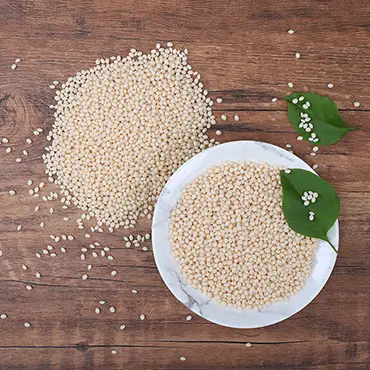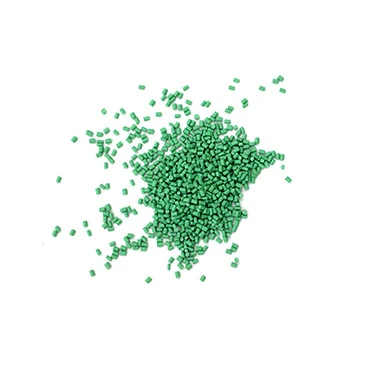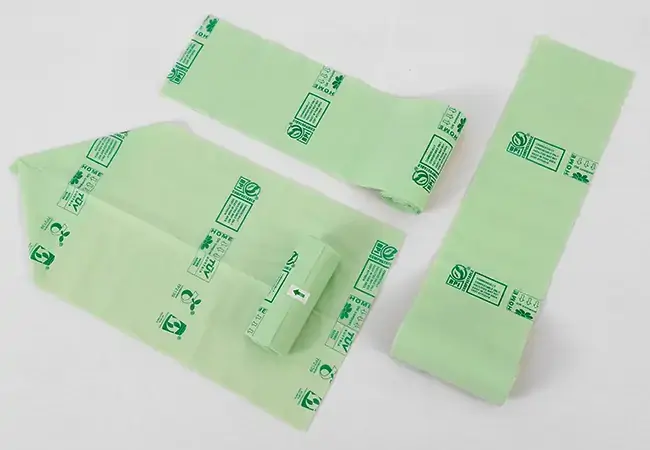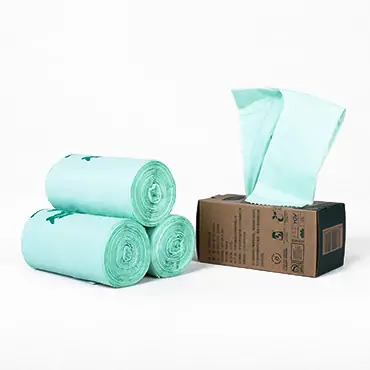Are you drowning in a sea of plastic guilt? We get it. Conventional plastics are a massive problem, polluting our planet at an alarming rate. But guess what? There’s a beacon of hope: biodegradable plastics! These revolutionary materials are changing the game, offering a sustainable alternative that’s good for business and even better for the Earth.
So, are you ready to dive into the fascinating world of bioplastics and discover how they can transform your business? Let’s get started!
What are Biodegradable Plastics?
Imagine a plastic that simply vanishes, returning to nature without leaving a trace. Sounds like magic, right? Well, that’s essentially what biodegradable plastics do. Unlike their traditional counterparts that linger for centuries, these materials break down naturally, thanks to the hard work of microorganisms like bacteria and fungi.
Defining the Difference: Biodegradable vs. Compostable
Now, you might be thinking, “Isn’t that the same as compostable?” Not quite. While all compostable materials are biodegradable, not all biodegradable materials are compostable. Think of it this way: composting is a specific type of biodegradation that requires specific conditions (like those found in industrial composting facilities) to break down properly.
Breaking It Down: How Biodegradation Works
So, how does this “vanishing act” actually work? It’s all about microorganisms munching on the plastic, converting it into water, carbon dioxide, and biomass. This process can occur in various environments, like soil, water, or even your compost bin, depending on the type of bioplastic.

What are Biodegradable Plastics Made Of?
Biodegradable plastics come from two primary sources: Mother Nature and…well, a bit of human ingenuity.
Nature’s Contribution: Bio-Based Biodegradable Plastics
This is where nature truly shines. Bio-based materials are derived from renewable resources, like plants.
- Starch: The Humble Hero
Corn starch, potato starch, and other plant-based starches are major players in the bioplastic game. They are abundant, affordable, and readily biodegradable.
- Beyond Starch: Cellulose and Other Plant Powerhouses
Starch isn’t the only plant hero. Cellulose, the main component of plant cell walls, and other natural polymers are also being used to create innovative bioplastics.
The Petrochemical Twist: Petrochemical-Based Biodegradable Plastics
These plastics are synthesized using fossil fuels as a starting material. However, the design of their molecular structure allows them to be broken down by microorganisms under certain conditions, eventually decomposing into substances like carbon dioxide, water, and biomass.
A Deep Dive into Popular Biodegradable Plastic Types
The world of biodegradable plastics is diverse, with each type boasting unique properties and applications. Let’s explore some of the key players:
- PLA (Polylactic Acid): The Rising Star
PLA is like the popular kid in the bioplastic class. Made from fermented plant starch, it’s versatile, strong, and has a wide range of uses, from packaging to 3D printing.
- PBAT (Polybutylene Adipate Terephthalate): The Flexible Friend
Need something bendy and durable? PBAT is your go-to. It’s often blended with other bioplastics to improve flexibility and toughness, making it perfect for films and bags.
- PHA (Polyhydroxyalkanoates): Nature’s Own Plastic
This one’s a true marvel. PHA is produced directly by microorganisms, making it a truly bio-based and biodegradable wonder. It’s like nature’s gift to the sustainable plastics movement.
- PBS (Polybutylene Succinate): The Versatile Performer
PBS is known for its excellent processability and heat resistance. It can be used in a wide range of applications, from injection molding to film blowing.
- PGA (Polyglycolic Acid): The Medical Marvel
PGA is a highly crystalline polymer that degrades naturally. Its claim to fame is in the medical field, where it’s used for sutures and other medical devices that need to dissolve harmlessly in the body.
- PCL (Polycaprolactone): The Slow and Steady Degraders
PCL is a synthetic biodegradable polyester. It degrades at a slower rate, making it perfect for applications where long-term durability is needed. PCL is often used in controlled drug release systems and 3D printing.
The Good, the Bad, and the Biodegradable: Weighing the Pros and Cons
Like any technology, biodegradable plastics have their strengths and weaknesses. Let’s break it down:
Why Go Biodegradable? The Environmental Wins
The benefits of switching to bioplastics are undeniable.
- Less Pollution: A Breath of Fresh Air
Conventional plastics are choking our landfills and oceans. Biodegradable plastics offer a solution by breaking down naturally, reducing the amount of plastic waste that pollutes our environment.
- Healthier Planet, Healthier You
Biodegradable plastics don’t contain the harmful chemicals often found in conventional plastics, making them a safer choice for both the environment and human health.
- Saving Energy: A Greener Footprint
Producing bioplastics often requires less energy than regular plastics, reducing our reliance on fossil fuels and lowering our carbon footprint.
The Challenges: Hurdles on the Road to Sustainability
It’s not all sunshine and rainbows. There are challenges to overcome.
- The Price Tag: Can We Afford It?
Currently, biodegradable plastics are generally more expensive to produce than common plastics. This can make them a less attractive option for businesses, especially those operating on tight margins.
- The Degradation Dilemma: It’s Not Always Easy Being Green
While biodegradable plastics are designed to break down, they need the right conditions to do so. If they end up in a landfill without adequate oxygen or moisture, they may not degrade as quickly as expected.
Applications of Biodegradable Plastic
Biodegradable plastic covers an extensive range of applications, including:
- Packing
This is one of the most widely used areas of biodegradable plastics. These plastic products are widely used to pack food, clothes, and other necessities. Thanks to the feature of strong, durable, and degradable, biodegradable packing products help to minimize environmental pollution.
- Medical Care
The medical industry is an important field for the application of biodegradable materials. At present, biodegradable plastics are mostly used as surgical sutures, fracture fixation devices, organ repair, artificial skin, tissue, and cell engineering. The use of biodegradable sutures can save patients the pain of removing stitches, and the use of built-in biodegradable repair devices can reduce the risk of rejection and infection.
- Construction
Biodegradable plastics are used in the production of building materials such as plastic sheets and bricks. The use of these building materials helps to reduce environmental pollution.
- Agriculture
Currently, many farm tools are made of biodegradable plastics. Agricultural ground film is arguably one of the most promising markets for biodegradable plastics. Biodegradable mulch can become one of the choices to replace the traditional PE mulch, which, like ordinary mulch, has the effect of increasing temperature, retaining water and moisture, and reducing the amount of agricultural fertilizer and water. At the same time, the biodegradable film can degrade itself, without the farmer’s time and effort to recycle.
The Future is Biodegradable: Why Your Business Should Care
Biodegradable plastics are not just a trend; they’re the future. As consumers become increasingly environmentally conscious, businesses that embrace sustainable practices will have a competitive edge. By switching to bioplastics, you’re not only reducing your environmental impact but also demonstrating your commitment to a greener future, attracting eco-minded customers and partners.
Join the Movement: How to Get Involved
Ready to be part of the solution? Start by researching different types of biodegradable plastics and exploring how they can be integrated into your products or operations. Connect with suppliers and distributors who specialize in bio-based materials. Educate your team and customers about the benefits of bioplastics.
The journey towards a sustainable future begins with a single, decisive step. We should embark on this path collectively, starting with the adoption of biodegradable plastics. Our efforts will contribute not only to the success of our enterprises but also to the well-being of future generations.





